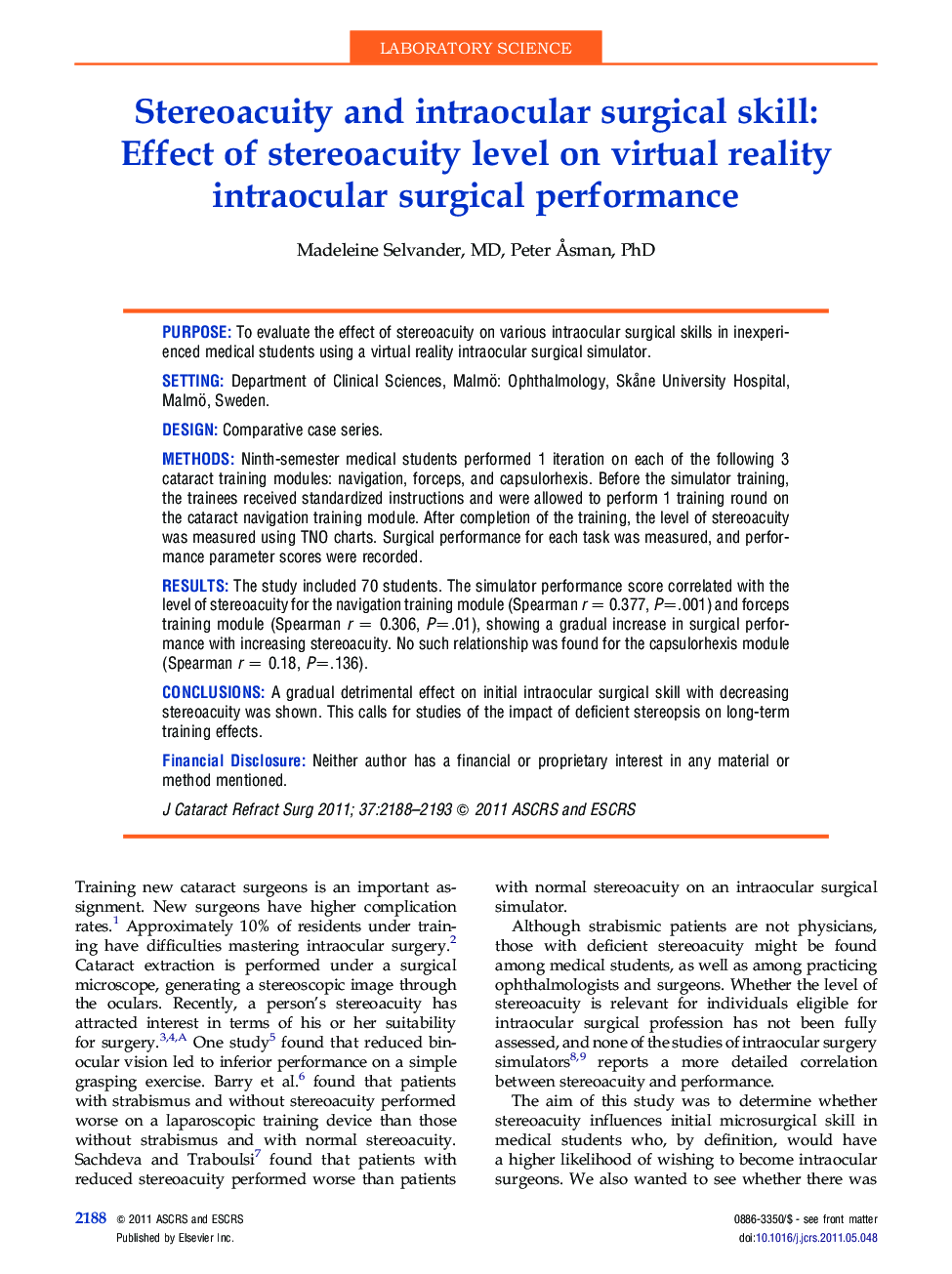| Article ID | Journal | Published Year | Pages | File Type |
|---|---|---|---|---|
| 4018449 | Journal of Cataract & Refractive Surgery | 2011 | 6 Pages |
PurposeTo evaluate the effect of stereoacuity on various intraocular surgical skills in inexperienced medical students using a virtual reality intraocular surgical simulator.SettingDepartment of Clinical Sciences, Malmö: Ophthalmology, Skåne University Hospital, Malmö, Sweden.DesignComparative case series.MethodsNinth-semester medical students performed 1 iteration on each of the following 3 cataract training modules: navigation, forceps, and capsulorhexis. Before the simulator training, the trainees received standardized instructions and were allowed to perform 1 training round on the cataract navigation training module. After completion of the training, the level of stereoacuity was measured using TNO charts. Surgical performance for each task was measured, and performance parameter scores were recorded.ResultsThe study included 70 students. The simulator performance score correlated with the level of stereoacuity for the navigation training module (Spearman r = 0.377, P=.001) and forceps training module (Spearman r = 0.306, P=.01), showing a gradual increase in surgical performance with increasing stereoacuity. No such relationship was found for the capsulorhexis module (Spearman r = 0.18, P=.136).ConclusionsA gradual detrimental effect on initial intraocular surgical skill with decreasing stereoacuity was shown. This calls for studies of the impact of deficient stereopsis on long-term training effects.Financial DisclosureNeither author has a financial or proprietary interest in any material or method mentioned.
